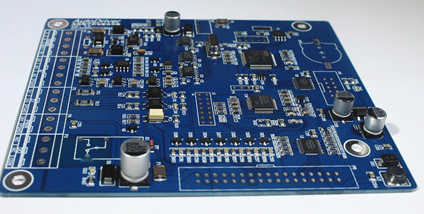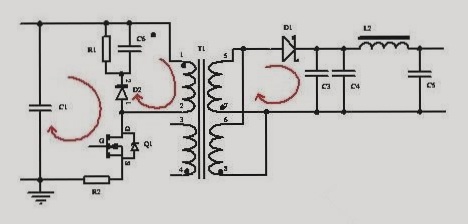1. In order to meet today’s demanding technical standards, the surface condition of printed circuit boards is an extremely critical factor. Manufacturers around the world invest significant time and resources in methods such as deburring, cleaning, brushing, and grinding to optimize the metal surface condition.
2. Preliminary treatment technology for the metal surface of printed circuit boards
3. Among all the materials used for surface adjustment, non-woven products offer the best performance. When utilized for various polishing, brushing, and deburring tasks, non-woven materials provide high strength, excellent durability, and a long service life. Their plasticity makes them suitable for board surfaces with more complex shapes. Non-woven materials can achieve the desired uniformity in polishing, brushing, and appearance requirements. The key to the superior performance of non-woven materials lies in their rebound and open web structure, which allows for cold running operations and helps prevent board warpage and surface deformation.

1. Abrasive analysis of the used grinding wheel can be categorized into six types:
1. In the abrasive series, the grinding wheel offers the most cutting ability. It is specifically designed for grinding materials, allowing it to quickly remove larger defects from the hardest surfaces.
2. Emery cloth or sandpaper is perhaps the most commonly used abrasive. It is utilized not only in metal processing but also in other areas, such as plastic surface finishing, and provides excellent polishing results.
3. Steel wire wheels are used for addressing severe defects on metal surfaces.
4. Nylon fiber brushes are employed to treat minor defects or oxide films on metal surfaces.
5. Polishing cloth wheels can remove a small amount of metal and achieve a mirror-like finish.
6. Non-woven abrasives are ideal for controlling material cutting and surface cleaning. Abrasive particles are bonded to the surface of synthetic circular columns, allowing for deburring or brushing at various speeds to achieve the ultimate goal.
Two, Clean and Brush
In PCB circuit board manufacturing, quartz sand is the most widely used material for cleaning and brushing. Quartz sand comes in four different types and sizes. It is composed of alumina, silicon carbide, aluminum silicate, and talc, among other materials, and is used in products like cleaning and polishing rollers and printed circuit board brushes.
Three, Surface Speed of the Wheel
The surface speed of the wheel is a crucial factor; higher speeds provide better surface conditions. High wheel speeds are particularly effective for removing burrs produced after drilling. However, excessive speeds can cause overheating on the brushed surface, reducing product life and leading to potential scrapping.
Four, Pressurization
When deburring, proper pressure must be applied depending on the board’s thickness and the copper foil thickness. Excessive pressure can shorten the product’s lifespan. The principle of pressurization should be based on the board’s condition and requirements, using the minimum pressure necessary to achieve the desired PCB technical effect.
2. Preliminary treatment technology for the metal surface of printed circuit boards
3. Among all the materials used for surface adjustment, non-woven products offer the best performance. When utilized for various polishing, brushing, and deburring tasks, non-woven materials provide high strength, excellent durability, and a long service life. Their plasticity makes them suitable for board surfaces with more complex shapes. Non-woven materials can achieve the desired uniformity in polishing, brushing, and appearance requirements. The key to the superior performance of non-woven materials lies in their rebound and open web structure, which allows for cold running operations and helps prevent board warpage and surface deformation.

1. Abrasive analysis of the used grinding wheel can be categorized into six types:
1. In the abrasive series, the grinding wheel offers the most cutting ability. It is specifically designed for grinding materials, allowing it to quickly remove larger defects from the hardest surfaces.
2. Emery cloth or sandpaper is perhaps the most commonly used abrasive. It is utilized not only in metal processing but also in other areas, such as plastic surface finishing, and provides excellent polishing results.
3. Steel wire wheels are used for addressing severe defects on metal surfaces.
4. Nylon fiber brushes are employed to treat minor defects or oxide films on metal surfaces.
5. Polishing cloth wheels can remove a small amount of metal and achieve a mirror-like finish.
6. Non-woven abrasives are ideal for controlling material cutting and surface cleaning. Abrasive particles are bonded to the surface of synthetic circular columns, allowing for deburring or brushing at various speeds to achieve the ultimate goal.
Two, Clean and Brush
In PCB circuit board manufacturing, quartz sand is the most widely used material for cleaning and brushing. Quartz sand comes in four different types and sizes. It is composed of alumina, silicon carbide, aluminum silicate, and talc, among other materials, and is used in products like cleaning and polishing rollers and printed circuit board brushes.
Three, Surface Speed of the Wheel
The surface speed of the wheel is a crucial factor; higher speeds provide better surface conditions. High wheel speeds are particularly effective for removing burrs produced after drilling. However, excessive speeds can cause overheating on the brushed surface, reducing product life and leading to potential scrapping.
Four, Pressurization
When deburring, proper pressure must be applied depending on the board’s thickness and the copper foil thickness. Excessive pressure can shorten the product’s lifespan. The principle of pressurization should be based on the board’s condition and requirements, using the minimum pressure necessary to achieve the desired PCB technical effect.


